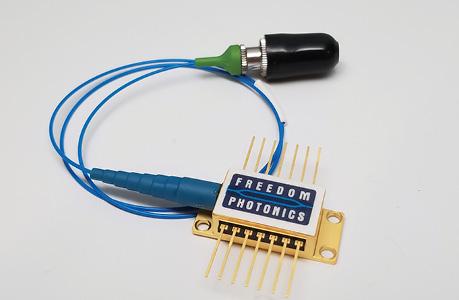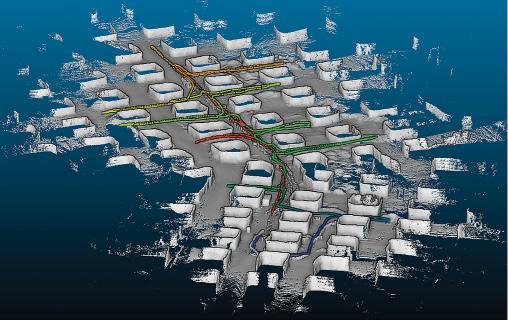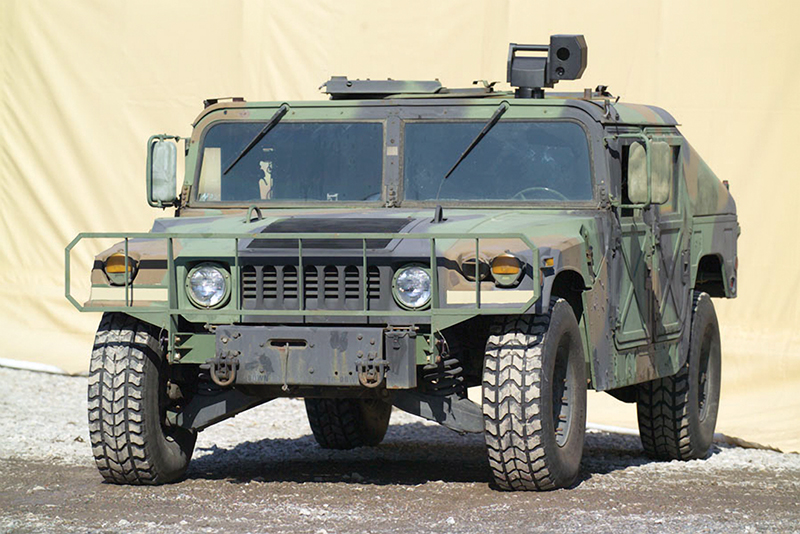
Infrared Imaging Sharpens View in Critical Situations
Originating Technology/NASA Contribution
The Microgravity Combustion Science group at NASA’s Glenn Research Center studies how fire and combustible liquids and gasses behave in low-gravity conditions. This group, currently working as part of the Life Support and Habitation Branch under the Exploration Systems Mission Directorate, conducts this research with a careful eye toward fire prevention, detection, and suppression, in order to establish the highest possible safety margins for space-bound materials.
Over the years, the group has established that many materials burn very differently in microgravity than they do on Earth. For example, attempting to stomp out a flame in microgravity could possibly accelerate combustion, at least temporarily (because an airflow is being created that did not exist before). Other interesting findings indicate that microgravity fires can spread faster upstream than downstream, opposite of the behavior of fire spreading on Earth, and that fire is actually weaker in microgravity. As a matter of fact, the weakest flames ever generated were done so in space. During the “Structure of Flame Balls at Low Lewis-number” (SOFBALL) experimental trials conducted during missions STS-83 (April 1997), STS-94 (July 1997), and STS-107 (January 2003), flames were generated in space with power as low as 1 watt—about 50 times weaker than a candle flame.
This is not to say that fire is safer in space, though. Fire outbreak on a spacecraft is just as dangerous as any fire situation on Earth, or arguably even more dangerous, given the inability of astronauts to evacuate. For this reason, the ability to detect subtle variations in temperature in a complex and varied thermal background could prove invaluable in a spacecraft.
Partnership
Innovative Engineering and Consulting (IEC) Infrared Systems is a leading developer of thermal imaging systems and night vision equipment. The Cleveland-based company was founded in 1999 by two microgravity combustion science researchers from the National Center for Space Exploration Research, an academic research organization located onsite at Glenn. In spinning off their new business venture, the two researchers utilized the engineering know-how they developed in measuring high-temperature flames for NASA space flight experiments.
Several years after opening for business, IEC Infrared Systems received a Glenn Alliance for Technology Exchange (GATE) award worth $100,000, half of which was in the form of additional NASA assistance for new product development. The GATE award was established by Glenn, the Ohio Aerospace Institute, and the Battelle Memorial Institute to assist small Ohio-based companies interested in collaborating with NASA to advance their products and processes.
IEC Infrared Systems used the funds earmarked for NASA assistance to work with electrical and optical engineers from Glenn’s Diagnostics and Data Systems Branch on the development of a commercial infrared imaging system that could differentiate the intensity of heat sources better than other commercial systems. Firefighters, for example, could use the proposed technology to make clearer distinctions between the intense heat of a fire and the lower-level thermal signatures of human bodies in fire-based search and rescue situations where darkness, smoke, or fog can obscure their vision.
Product Outcome
The firsthand NASA knowledge and the follow-up funding and technical support from the GATE award were the catalysts for IEC Infrared Systems to evolve from a start-up venture to a multimillion dollar business with a staff of more than 30 scientists, engineers, and technicians spanning a wide range of engineering fields. Today, the company offers two major thermal imaging solutions that stem directly from its vast NASA experience: NightStalkIR and IntrudIR Alert (“IR” for infrared). These two imaging systems have found widespread use in emergency first-responder, facility security, and military applications.
With advanced imaging capabilities, proprietary signal processing and electronics, and a tough, rugged exterior, NightStalkIR offers optimal daytime/nighttime surveillance in all weather conditions. Features include a low-light camera with lens options ranging from 50 to 180 millimeters (without the “halo” effect commonly seen in some imagers), full 360-degree rotation with pan and tilt, hand controller and PC software control, fixed or mobile (vehicle) mounting, and onscreen positional display of imaging direction and other tactical data. Optional features include fiber optic and wireless capabilities, an image-intensified camera that further enhances nighttime imaging in the visual spectrum, and Global Positioning System/compass/laser range systems that provide the precise location of observed targets for increased tactical awareness.
IntrudIR Alert is an intrusion-detection system designed to operate with multiple NightStalkIR thermal imagers. This software-based system allows a single operator to command and control these imagers over a broad area, for maximum tactical and situational awareness and early warning of intrusions. Features include target tracking, based on either thermal signatures or motion detection (or a combination of both), continuous automatic tracking of these targets, and digital capturing of still images or short video clips, either on command or in response to alarms. In addition to being compatible with NightStalkIR, IntrudIR Alert can be integrated into larger security networks.
According to IEC Infrared Systems, NightStalkIR and IntrudIR Alert are being used in the United States and abroad to help locate personnel stranded in emergency situations, defend soldiers on the battlefield abroad, and protect high-value facilities and operations. The company is also applying its advanced thermal imaging techniques to medical and pharmaceutical product development with a Cleveland-based pharmaceutical company. This cooperative effort was enabled by a NASA Space Act Agreement, as Glenn continues to encourage IEC Infrared Systems’ founding partners to explore new product ideas based on the techniques developed during their tenure at NASA. For the founders, their work with NASA and their related commercial endeavors have given a whole new meaning to “playing with fire.”
NightStalkIR™ and IntrudIR Alert™ are trademarks of Innovative Engineering and Consulting Infrared Systems.
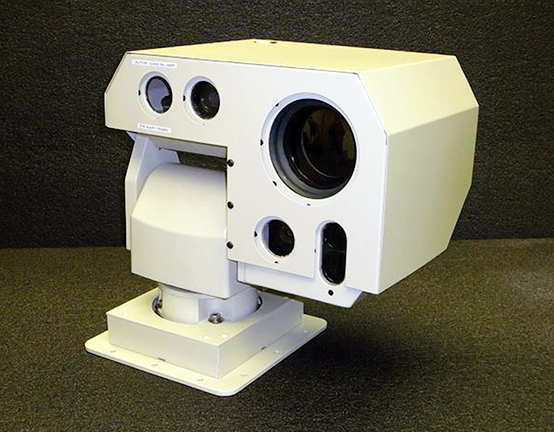
IEC Infrared Systems’ Thermal/Visual Imaging Systems product line features a suite of thermal imaging devices that are used in a wide range of applications.
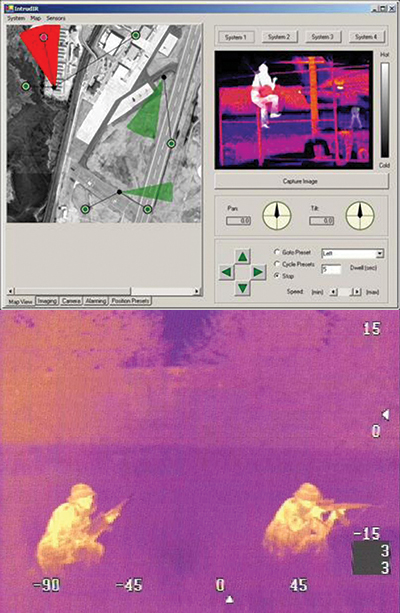
This software-based system allows a single operator to command and control these devices over a broad area, for maximum tactical and situational awareness and early warning of intrusions.

Modern infrared imaging devices allow users to see through smoke and fog, as well as in total darkness. They have widespread use in military, facility security, and emergency first-responder applications.












